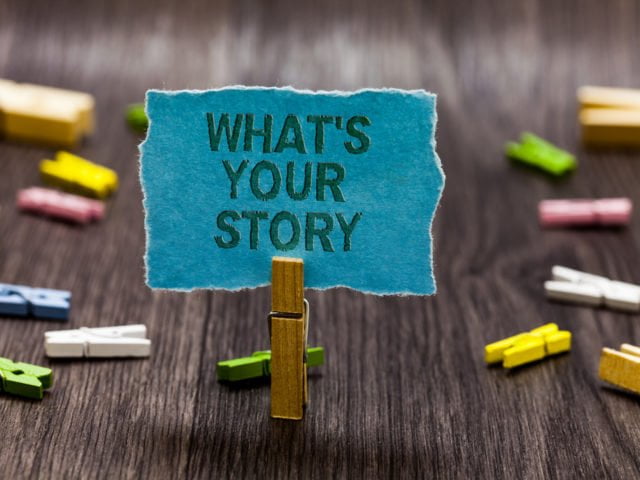Hi! I’m Allie Spencer and I taught at the Festival of Writing in 2018, along with many other fantastic writers, agents and publishers. As tutors, our aim is not just to get you thinking about your writing but thinking differently. Sometimes it’s that extra piece of information or a fresh approach that can make all the difference. This year, one of the things I will be talking about is story and discourse and how you can harness it to see your work in a completely new way.
One of the concepts often mentioned in creative writing tutorials is that of ‘showing not telling’. For those of you who have yet to encounter it, ‘show not tell’ means that instead of an author passing information on directly to the reader (‘John felt angry’), that information is instead conveyed indirectly (‘John could not speak; the blood pounded in his head and he felt his fists clench’). This does not mean that one should never ‘tell’ – there are times when that is essential – but it moves the emphasis from what happens in a text, to how the reader can best experience and engage with what is happening. Thinking in terms of story and discourse takes this one step further. It allows an author to separate out action from meaning and therefore focus on creating multi-layered narratives rich in interest and nuance.
To begin with, we need to be clear about the terminology. ‘Story’ is the stuff that happens: it is the pure events, the actions, the ‘she got off her chair and walked to the other side of the room’ part. To look back at our show/tell example: ‘he shouted’ is story; ‘he was angry’ is not. However, the story often forms only a small part of the text. The rest is made up of ‘discourses’: the unspoken conversations we as authors have with our readers in order to create atmosphere, implicitly pass on information or suggest ideas that add to the understanding of the ‘story’. Sometimes the ‘story’ and the ‘discourse’ will be one and the same (for example, when an action or event has symbolic or ironic overtones) but, for the most part, they exist independently of one another.
So, why should we as writers be particularly interested in discourse? Isn’t it the same as creating atmosphere or description? Well, not exactly. One of the reasons why we need to be aware of it is because, as authors, our job is to create believable imaginary worlds. Now, our lived experience of the world is not purely a series of consciously-perceived events but instead a mishmash of thoughts, perceptions, emotions, connections, ideas and half-realisations. Sometimes these are entirely subconscious. For example, researchers at the University of Colorado have found that people holding a hot drink, even for a few seconds, judge others around them to have ‘warmer’ personalities than when the same person holds a cup containing an iced liquid. These half-conscious or subconscious thoughts are the real-life equivalents of discourses. By being aware of the power of discourses and how they operate within our writing, we can help make our imagined worlds, and our characters’ reactions to them, as real as possible for our readers.
To explore this further, I’d like you to watch the following clip on YouTube. Even though this is a screenplay rather than a piece of prose, the basic divide between story and discourse remains the same. It’s the closing scenes from the pilot episode of ‘Endeavour’, the series about the young Morse set in the1960s:
Watch Clip Here
A little background for those who do not know either the Endeavour series or the older Inspector Morse programme: the young detective in this clip (Endeavour Morse) does not leave Oxford or resume his degree, as the dialogue suggests. Instead, he stays in the city and progresses up the police ranks until he becomes an inspector.
Watch the clip through a couple of times, just to get an idea of what is happening. Then play it again and try to separate out the ‘story’ (action; factual information given to the viewer through dialogue; physical setting etc.) from ‘discourse’ (atmosphere; allusions; emotion; suggestions). Remember that sometimes the ‘story’ will also be ‘discourse’ – be aware of this and try to spot it when it happens.

What did you notice? One thing which quickly becomes apparent is the lack of actual ‘story’: a young man walks down some stairs carrying two suitcases and exits a house; he is met by another man (DI Fred Thursday, although this is not mentioned in the clip) standing next to a black Jaguar car, who asks him what time his train is. The older man then tells the younger not to worry about a mistake he has made. The younger man asks if he can drive and they make their way through city streets in the car. They have a conversation about the young man’s future and the older man offers to mentor him. The younger man looks in the rear-view mirror and the face of a third, much older, man appears there. Some music plays. The younger man continues to look in the mirror while the traffic lights change to green. To get his attention, the older man says his surname (‘Morse’), followed by his first name (‘Endeavour’). They drive away and the screen fades to black.
It is left to the discourses to transform this sequence of events into a powerful and evocative piece of drama. Right at the start of the clip we are made aware of the emptiness of the house as Endeavour leaves: the fact that no one is there to say farewell indicates the loneliness of the young man’s situation. The ticking clock emphasises the silence in the house and also suggests the theme of passing time which will be key to our understanding of the next few scenes. The subsequent interactions between the two men are laden with symbolism: Endeavour asking to drive and receiving the keys from Thursday suggests he is taking control of his own destiny, for example. Also apparent is the indication that DI Thursday is, in many respects, the man young Endeavour will eventually become: he will reach the same rank in the police force and drive the same make and model of car. The most powerful example of discourse, though, happens at the end, when the face of Morse as a much older man appears in the rear-view mirror: Endeavour is, quite literally, looking at his future. In fact, he appears to see it too because he continues to stare at the mirror and doesn’t pull away when the lights change – the camera shot used to show the green light is from Thursday’s viewpoint, not Endeavour’s. The use of the iconic ‘Inspector Morse’ theme tune at this moment further underlines the connection that has been made between Endeavour’s present and his future: we, the audience, know which road he will take and we have already seen his destination.
Of course, there are many other discourses at work in this clip and you are welcome to try and find as many as possible; it is a great example of how writers can use suggestion, prefiguring, metaphor and irony to enrich and add layers of meaning to a narrative. Good writing (whether prose, screenplay or poetry) should always work on more than one level. Being aware of story, discourse and the difference between them will help you to look objectively at your own writing and, if you need to, add in that little bit extra. Your readers will love you for it!
Allie had a jam-packed weekend at the Festival of Writing 2018. She hosted a mini-course on How to Write a novel in 3 Hours, a Session 2 workshop on Four Act Structure and her Sunday workshop, ‘Telling Tales – What Makes a Story Come Alive’.
Jericho Writers is a global membership group for writers, providing everything you need to get published. Keep up with our news, membership offers, and updates by signing up to our newsletter. For more writing articles, take a look at our blog page.











